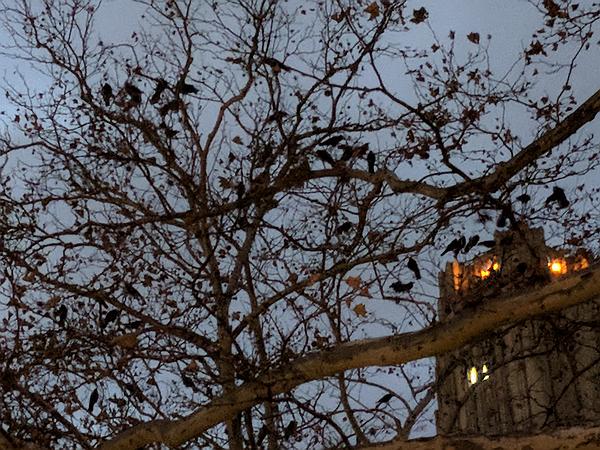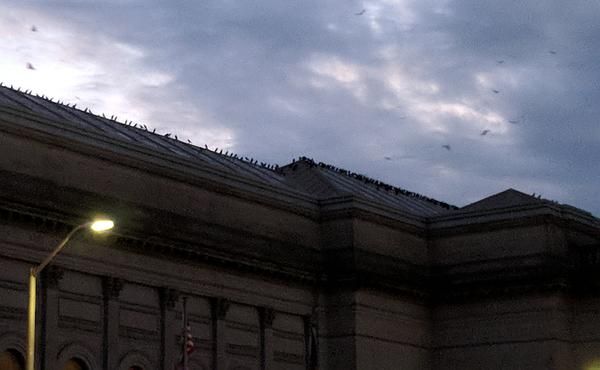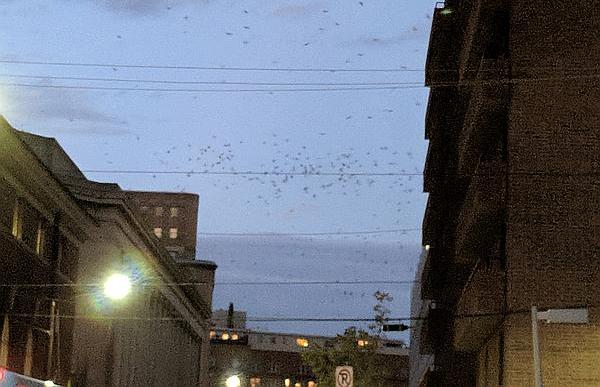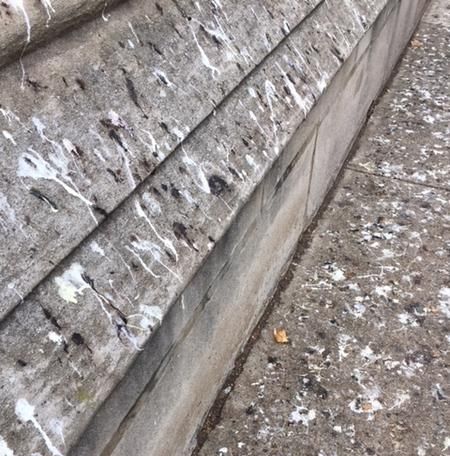
The black silhouettes in this tree near the Cathedral of Learning are not leaves. They’re crows.
Pittsburgh’s crow population has swelled since the weather turned cold last weekend. On Monday I counted 4,000 flying into Oakland from the south, pausing on the roof of Carnegie Museum before heading to their final destination.

I couldn’t even see the crows arriving from east, west and north but distant trees at Schenley Farms were coated with crows and hundreds, perhaps thousands, gathered on the rooftops north of Fifth Avenue. My cellphone barely captured a look at them as night was falling.

Where did they roost? I didn’t stay long enough to find out, but they left their evidence behind.
On Tuesday Claire Staples sent me photos from St. Paul’s Cathedral on Fifth Avenue. The crows left a mess on the wall and sidewalk below the stately London plane trees.


For now the crows are roosting near Fifth Ave and Craig Street but that will change. They’re wearing out their welcome.
(photos by Kate St. John and Claire Staples)
Where do they feed and what do the eat Kate? In the UK we had huge flocks of Starlings descending on urban centers. I remember their noisy chatter in Newcastle.
Elizabeth, the crows travel up to 30 miles to find food. They are particularly fond of landfills.
Once when my English friend was visiting, I referred to the “sanitary landfill”. She said, “What’s that?” I searched my British English vocabulary and said, “the tip.”
The language differences in English can be odd. “The tip” in England is the dump; “the tip” in America is the gratuity.